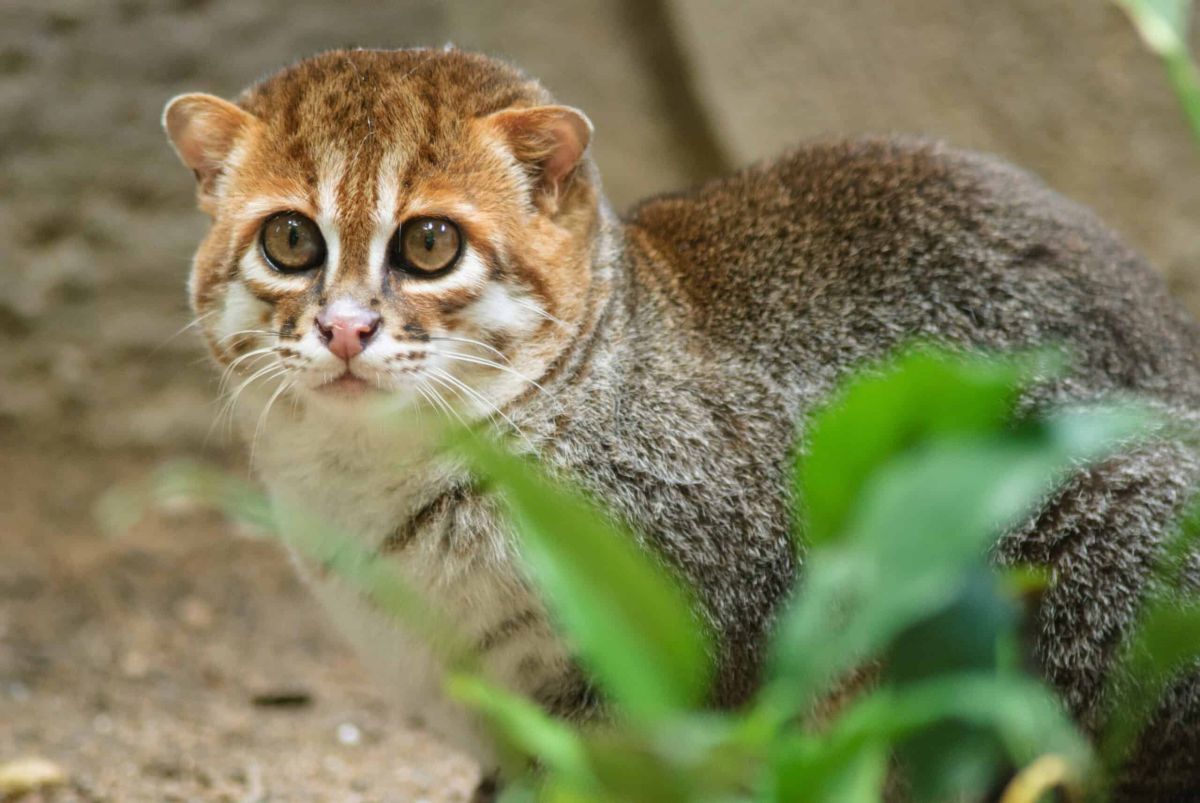The Fascinating World of the Flat-Headed Cat

When discussing the diverse array of species in the cat family, few capture the imagination quite like the flat-headed cat (Prionailurus planiceps). Native to the dense wetlands and forests of Southeast Asia, this small, elusive wild cat is a marvel of evolution, specifically adapted to its unique habitat. With a striking appearance and remarkable behaviors, the flat-headed cat offers fascinating insights into the biodiversity of the region and the complexities of ecosystem health.
Physical Characteristics
The flat-headed cat is distinct in both appearance and size. It typically weighs between 5 to 12 pounds, with a body length of about 24 to 28 inches. One of its most noticeable features is its broad, flat head, which gives the species its name. This unique head structure is not merely for show; it serves an important purpose. The flat-headed cat possesses a flattened skull and a wide, short muzzle, allowing for an efficient hunting strategy in its aquatic environment.
Its fur is another defining characteristic. The coat is short, sleek, and typically comes in shades of brown with darker spots and stripes, which serve as camouflage among the dappled light of the forest floor and along riverbanks. Their large, expressive eyes and rounded ears further enhance this intriguing feline’s striking appearance.
Habitat and Distribution
The flat-headed cat is primarily found in the lowland forests and wetlands of Southeast Asia, specifically in countries like Thailand, Malaysia, and Indonesia. It is often associated with rainforest environments, swamps, and floodplains, preferring areas near slow-moving rivers and streams. These environments provide the perfect habitat for the cat not only to hunt but also to hide from potential predators.
Unfortunately, the flat-headed cat’s habitat is under threat from deforestation, habitat fragmentation, and pollution, leading to concerns about its conservation status. The International Union for Conservation of Nature (IUCN) lists the flat-headed cat as “Endangered,” emphasizing the urgent need for dedicated conservation efforts to protect this remarkable species.
Behavior and Diet
Flat-headed cats are solitary creatures, primarily nocturnal and crepuscular, meaning they are most active during the twilight hours. Their unique adaptations make them exceptional swimmers, often seen stalking through shallow waters in search of prey. Their diet mainly consists of fish, amphibians, and small mammals, allowing them to take full advantage of their aquatic surroundings.
These cats are known for their stealth and intelligence while hunting. They utilize their keen sense of hearing and sight to locate prey, often employing a patient, ambush-style approach. Interestingly, the flat-headed cat is also known to be an excellent climber, using its agility to navigate trees and rugged terrains.
Reproduction and Lifespan
The flat-headed cat’s mating habits remain somewhat obscure due to its elusive nature. However, it is believed that females typically give birth to litters of one to four kittens. The gestation period lasts about 60 to 70 days, and after birth, the mother fiercely protects her young while teaching them essential survival skills.
In the wild, flat-headed cats have a lifespan of about 7 to 10 years, although they can live longer in captivity. Captive breeding programs are critical for the future of this species, as they contribute to genetic diversity and the potential reintroduction of individuals into their natural habitats.
Conservation Efforts
Recognizing the urgent need to protect the flat-headed cat and its habitat, various conservation organizations are working tirelessly to mitigate threats facing this species. These efforts include habitat preservation, anti-poaching measures, and education initiatives that raise awareness about the importance of biodiversity in Southeast Asia.
Preserving the flat-headed cat not only benefits this unique feline but also contributes to the overall health of the ecosystem. Wetlands and forests host a plethora of species, and safeguarding these environments ensures the survival of countless other plants and animals.
Conclusion
The flat-headed cat is more than just a striking member of the Felidae family; it is a symbol of the delicate balance of nature and the urgent need for conservation efforts in a rapidly changing world. By protecting this remarkable cat, we take a significant step toward ensuring the survival of not just a species, but entire ecosystems that depend on biodiversity. As we continue to learn more about this enigmatic feline, we are reminded of the intricate connections that bind all life on our planet.



